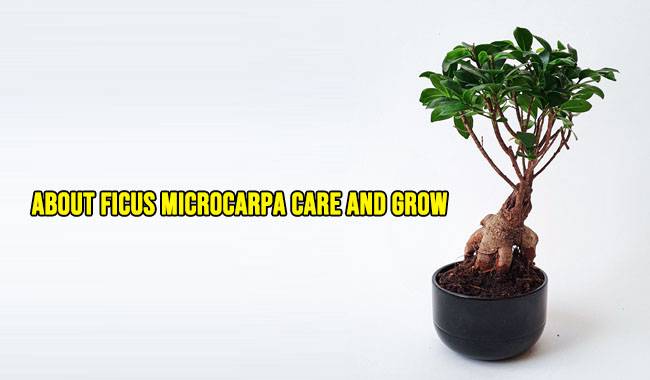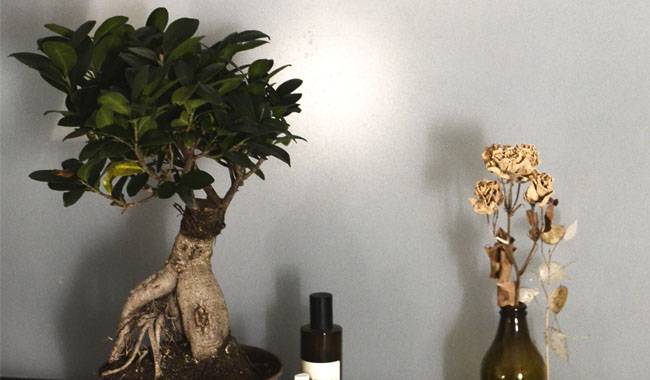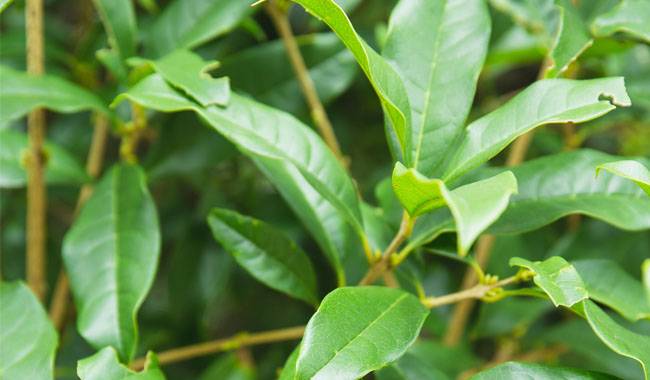
Ficus microcarpa is the most common form of bonsai and one of the most valuable indoor ficus species, known for its shade tolerance and striking appearance. Everything is remarkable, from the bark to the airy roots, leaves, and fruit in this exceptional ficus species. Despite its preference for humidity, Ficus microcarpa is rightly considered one of the most suitable species for introducing bonsai and making bonsai art. The grateful plant will become an exquisite interior decoration with the right conditions and no major lapses in care. ThumbGarden article will learn About Ficus Microcarpa Care and Grow.
FICUS MICROCARPA PLANT DESCRIPTION
Ficus microcarpa is one of the few plants we know by its full botanical name rather than Ficus microcarpa. People like to call it Chinese banyan, Malayan Banyan, Indian laurel, curtain fig, or gajumaru. Still, whatever you call it, this plant remains one of the most distinctive species of ficus.
Ficus microcarpa is cultivated indoors as a bonsai, rediscovering both the beauty of the branches and the bushy and other qualities. The plant reaches a height of 4 inches (10 cm) to 40 inches (1 m). Depending on the formation method, it is most commonly grown as an upright tree with a thickening at the base of the trunk, which is formed by an intricately intertwined root system that sometimes turns into thick “legs.” Large numbers of aerial roots are the norm but are sometimes lost due to a lack of moisture.
The bark – glossy, pale, beige tinged gray – is surprisingly thin. Ficus microcarpa has a very lush canopy with beautiful, dense shoots that become more massive with age, especially in combination with fancy air and prominent roots.
The green color of Ficus microcarpa is meant to contrast with the light-colored bark of the tree. Its dark, saturated hues appear very bright. Ficus microcarpa’s leaves are alternate, short-stalked, lance-shaped ovate, broad or narrow, depending on the species, but always with a pointed tip.
The plant does not flower indoors and rarely blooms in the greenhouse. The fruits are small, berry-like, and vary in color from yellow to red.
POPULAR MICROCARPA CULTIVARS
Ornamental forms and cultivars of Microcarpa vary in green color, leaf width, and shape of the trunk and roots. Three varieties are particularly popular.
Ficus ginseng (Ficus retusa) has roots similar to the tubers of ginseng.
Ficus Moclame, which has gray bark and small leaves.
Hosta Albomarginata, a mottled species with a predominantly white color.
GROWING CONDITIONS OF FICUS MICROCARPA

Ficus microcarpa does not like to go to extremes and prefers stability. This bonsai species is pleasantly shaded tolerant, but it is still relative, and it is not worth experimenting within a back-of-the-room location. However, placement in a north or east-facing window or diffused light on the west or south-facing windowsill will suit Eleocharis microcarpa (except for the highly light-loving variegated species). The leaves of young miniature plants can gradually become accustomed to direct sunlight, but it is best to protect them at least during the middle of the day.
In winter, it is best to move the plant to a brighter windowsill or arrange for backlighting to protect it from the sudden reduction in light. If left unattended, ficus leaves will all fall off.
Small trees are heat-loving plants. Even in winter, their minimum allowable temperature is limited to 59 °F (15 °C). But this ficus also does not like heat. Even in summer, an increase to 77 °F (25 °C) is better compensated by a proportional increase in air humidity and ventilation. The optimum pattern is 70-75 °F (21-24 °C) in summer and 60-68 °F (16-20 °C) in winter.
From temperature fluctuations, ventilation, air conditioning, and heating, the trees are better protected. Sudden displacement, turning Ficus microcarpa does not like and must be monitored about the position of the light source. This plant prefers to spend the summer in protected seclusion in the garden or on the terrace, rather than indoors. If you take it outdoors, be sure to control the temperature at night and bring back the ficus at any “hint” below 59 °F (15 ° C).
Ficus microcarpa is the most common form of bonsai and one of the most valuable indoor ficus species, known for its shade tolerance and striking appearance.
This is one of the most friendly of all bonsai species. It is suitable for beginners and those who like to experiment. The key to success is to control soil moisture and high air humidity.
Watering and air humidity
If the substrate dries out completely, the plant’s roots will dry out, but humidity is also unacceptable. After the topsoil has dried 1 inch (2.5 cm), water the small trees moderately, check the humidity frequently, and change the frequency of these procedures according to the temperature and plant growth. In summer, especially in hot weather, “bathing” – immersing the aerial roots of the plants in warm water – is done in addition to the usual watering.
Water quality is a key factor for microcarbonates. Only soft, ideal rain or melting water will do.
Without high air humidity, success cannot be achieved. Ficus microcarpa will only release aerial roots if it is above 70%. Spraying plants worship, but this isn’t easy without installing a humidifier or a tray with wet pebbles.
The leaves of the plants should be kept clean.
Feeding and fertilizer composition
Ficus microcarpa is best fertilized with a special bonsai fertilizer, but fertilizer for ficus trees is fine. Fertilization should be done from March to November.
Root feeding, every 2 weeks with a standard dose of watering (after transplanting, stop feeding for 8 weeks).
Foliar spraying, every 2-3 weeks, at 4-5 times lower concentration.
When repotting and problems arise, you can improve the plants’ resistance to stress by spraying with plant hormones or growth stimulants.
Pruning and shaping of Ficus microcarpa
The thick crown of Ficus microcarpa can easily be cut back, and even the trunk of young seedlings can be shortened. Intense pruning should only be done in spring after plant cleanup, but additional pruning can be done throughout the year. Usually, limit skeletal buds to 6 inches (15 cm) and lateral buds to 4 leaves and remove the top buds. Wire can be used, but be careful as the thin bark can be easily traumatized. All cuts and wounds should be treated with horticultural paste.

Repotting, Containers and Substrates
The plant should not be disturbed until the previous container is fully developed. Repotting should be done in the mid-spring after active growth has begun.
For Ficus microcarpa, use a container suitable for bonsai – low, wide, with drainage holes, narrow – free base – no more than 1 inch (2.5 cm).
The substrate needs to be a special, breathable, coarse substrate, preferably for bonsai or ficus. The substrate should consist of equal parts of leaves, turf soil, peat, and sand mixed by itself (only with sufficient experience) with clay, ash, and loosening agents. Drainage should be high.
When repotting, either leave the plant as it is, turn it over and check the condition of the roots, or reshape it by tying or shortening the roots and treating the wounds carefully as necessary. Leave some of the root systems above the surface. Immediately cover the soil with moss or decorative material. Acclimatization requires minimal watering, protection from direct sunlight, and the highest possible humidity.
Diseases, pests and growth problems
Any problems with this ficus are the result of poor care or improper conditions. Growth and foliage problems require a thorough and comprehensive analysis to determine all faults, from humidity to nutrition to soil conditions.
This bonsai reacts very painfully in winter, often dropping its leaves and looking almost lifeless. But it is worth giving the plant time: only blackened shoots can be considered dead, and when conditions and humidity return to normal (but before a month after leaf drop), even dry branches may awaken.
Pests of small trees include scale mites and spider mites. They are best controlled immediately with systemic insecticides.
Propagation of Ficus microcarpa
New plants are most commonly cut from cuttings with a few internodes at the apex, in summer from semi-woody shoots. After soaking in water to remove the sap, the cuttings are placed in pure water with charcoal added or soil and rooted under a hood.
New plants can also be obtained from aerial shoots or grown from seed. After stratification and soaking in a cold environment, they are sown shallowly and gently covered with soil (under glass). Seedlings should be kept in bright diffused light at 77 °F (25 °C). Seedlings will be cut down after a few true leaves have formed. It is best to start the formation as early as possible.







